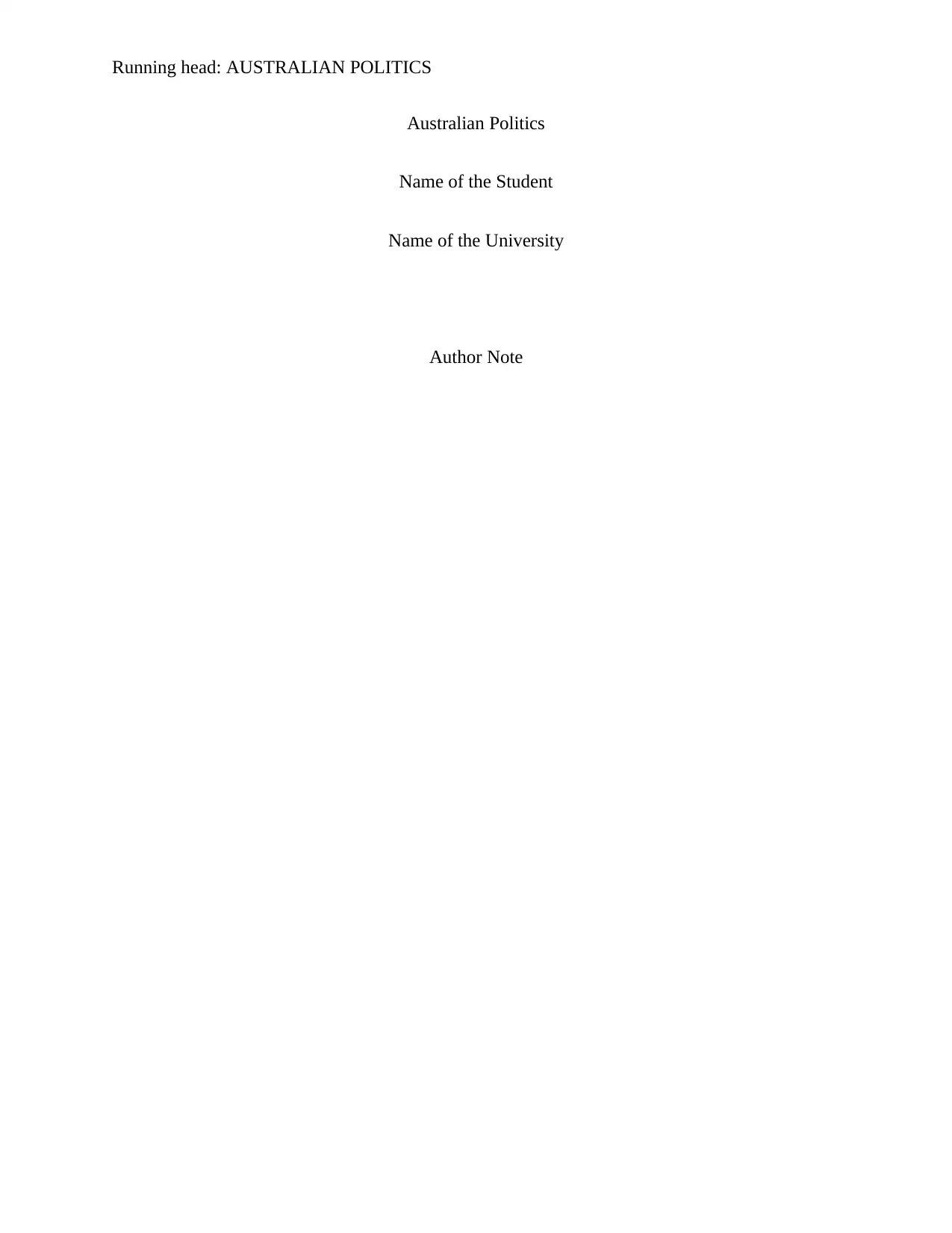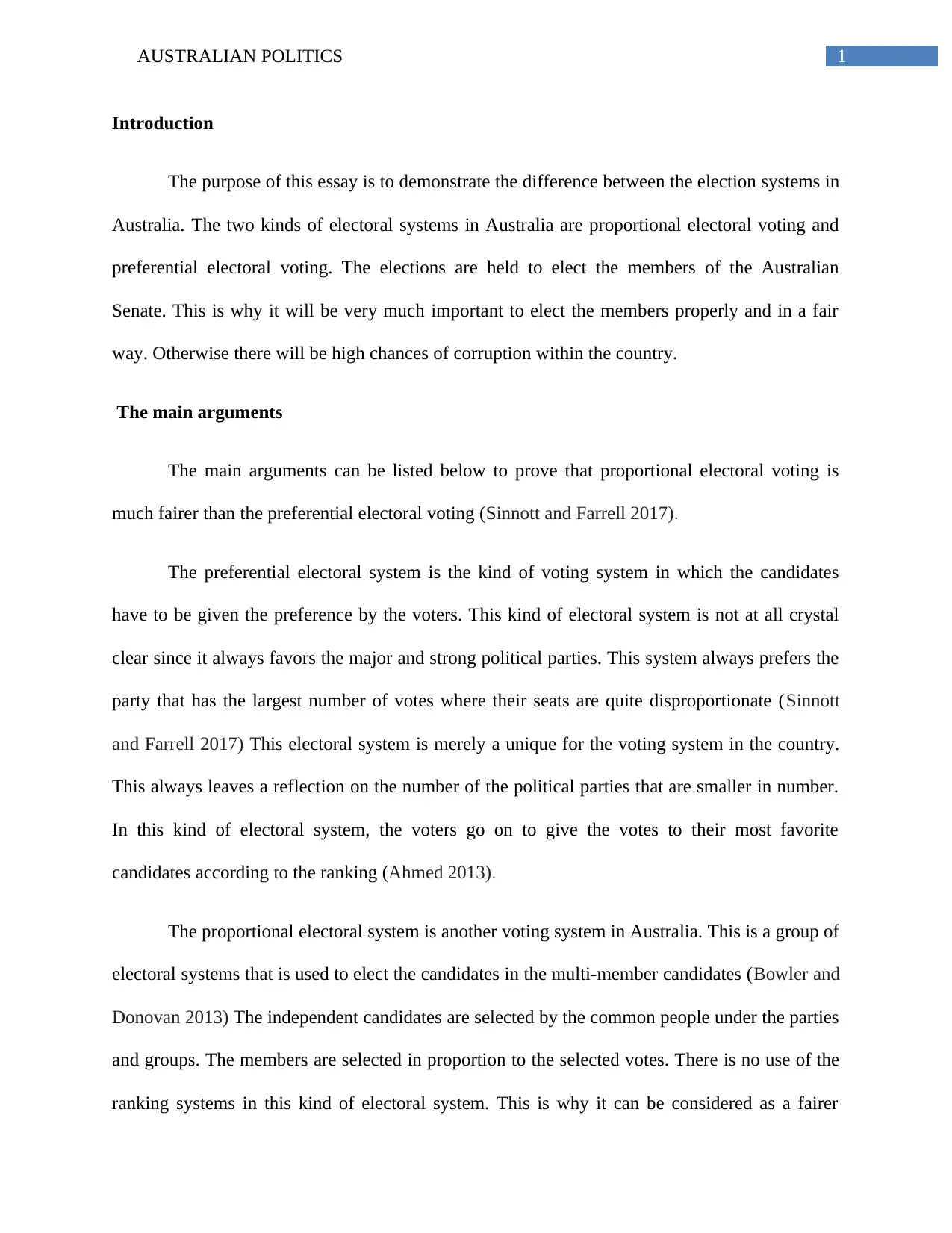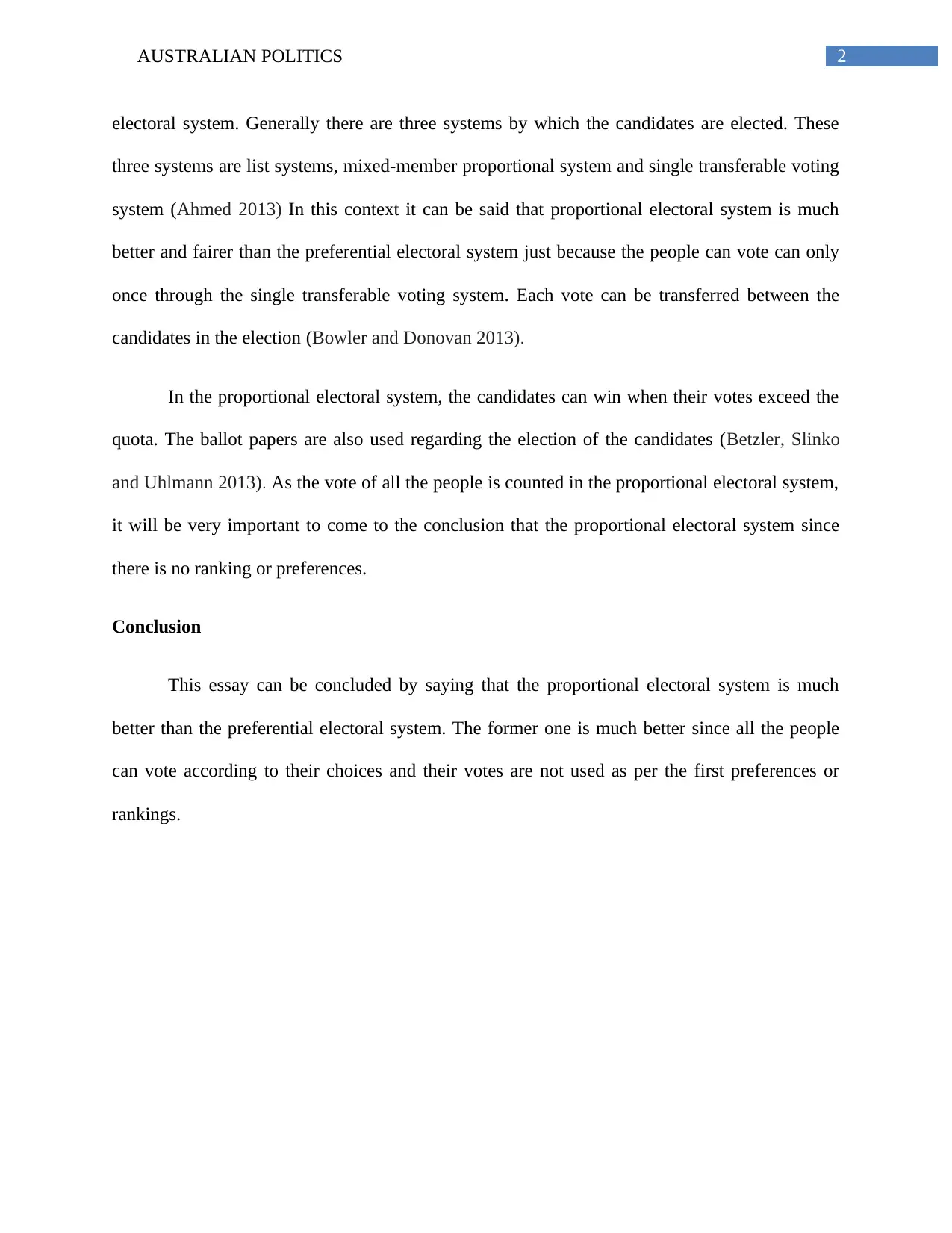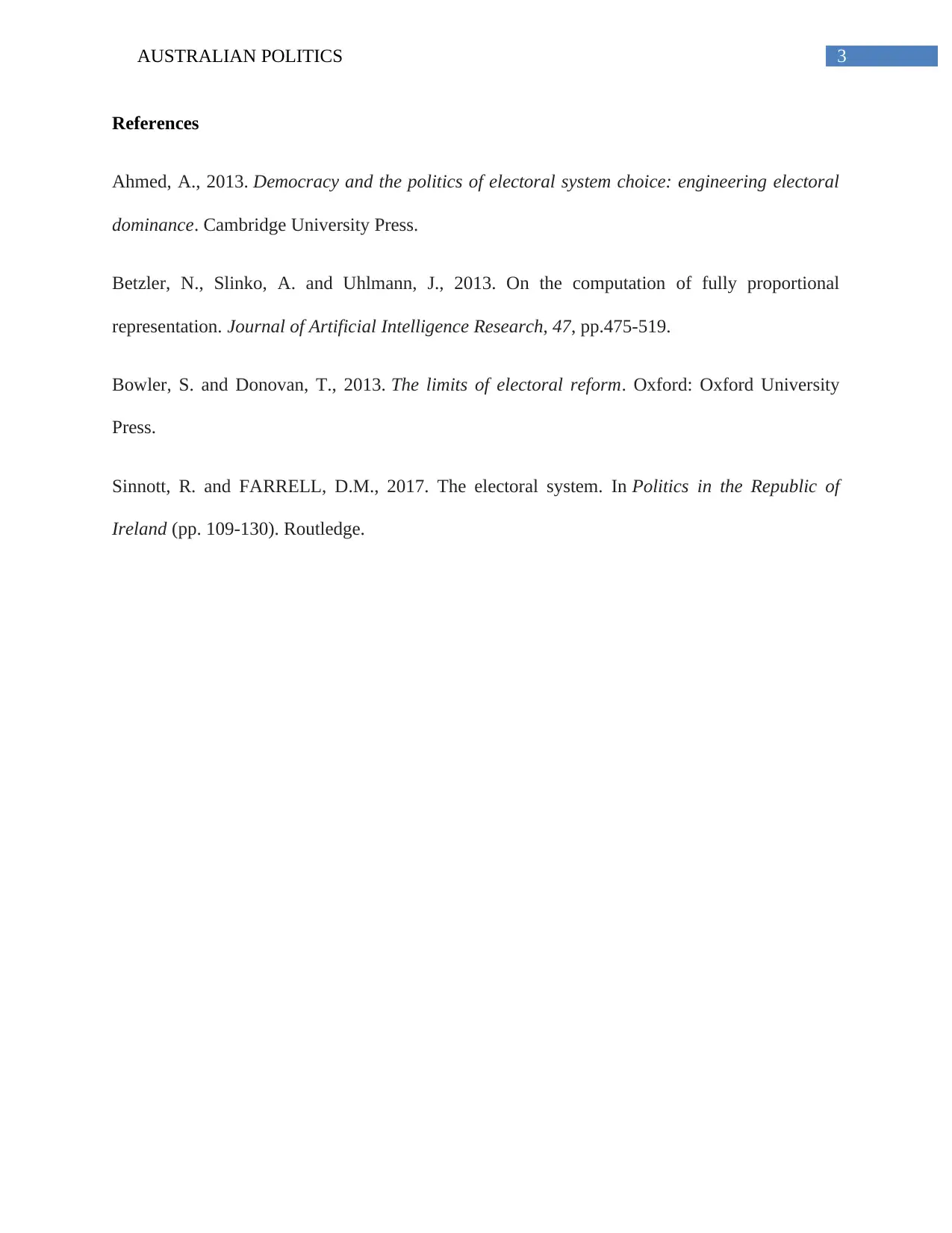A Critical Analysis: Proportional vs. Preferential Electoral Systems
VerifiedAdded on 2021/06/17
|4
|674
|77
Essay
AI Summary
This essay examines the differences between proportional and preferential electoral systems in Australia, arguing that proportional voting is fairer. The preferential system, where voters rank candidates, is seen as favoring major parties and disproportionately allocating seats. In contrast, the proportional system, particularly the single transferable voting system, allows voters to vote once, with votes transferable between candidates. This system ensures that candidates win when their votes exceed a quota, promoting fairer representation as all votes are counted without ranking biases. The essay concludes that the proportional system is superior because it allows people to vote according to their choices without the constraints of preferences or rankings, leading to a more equitable electoral outcome.
1 out of 4








![[object Object]](/_next/static/media/star-bottom.7253800d.svg)